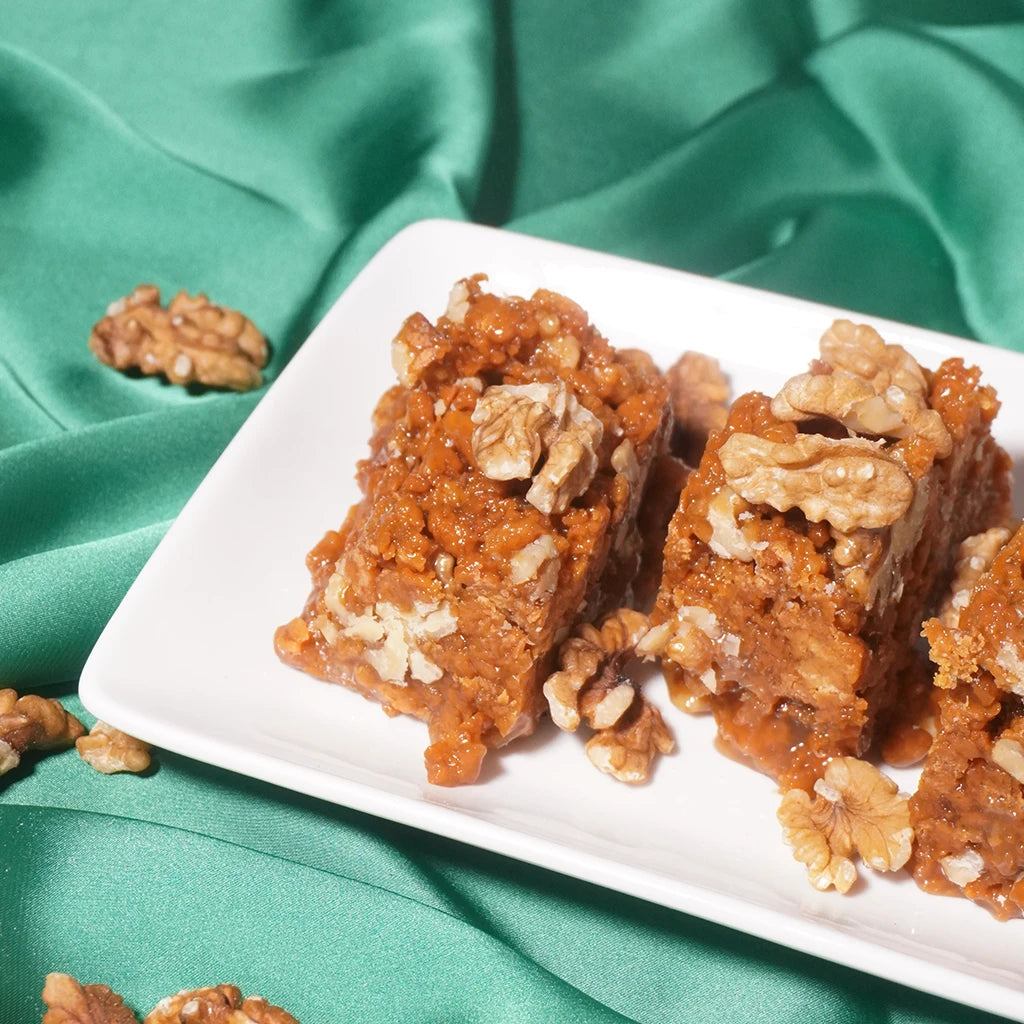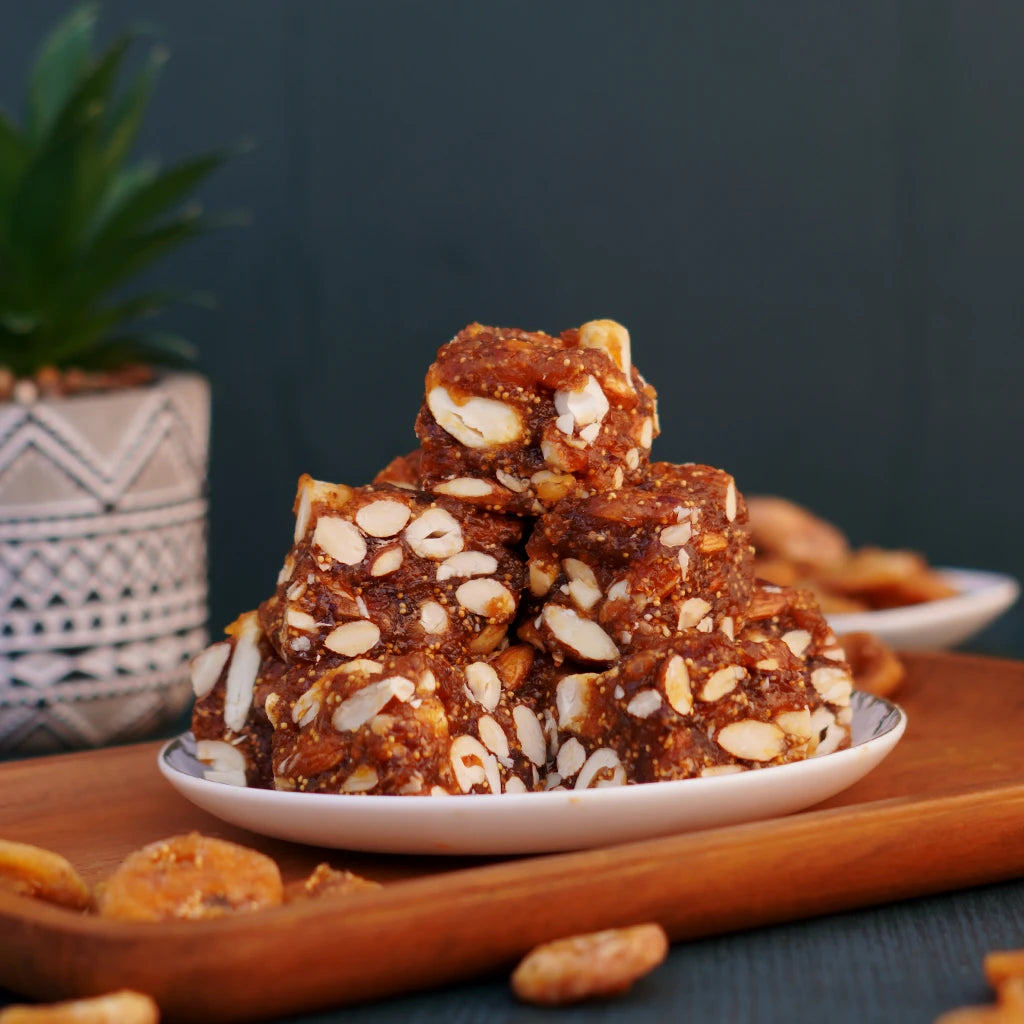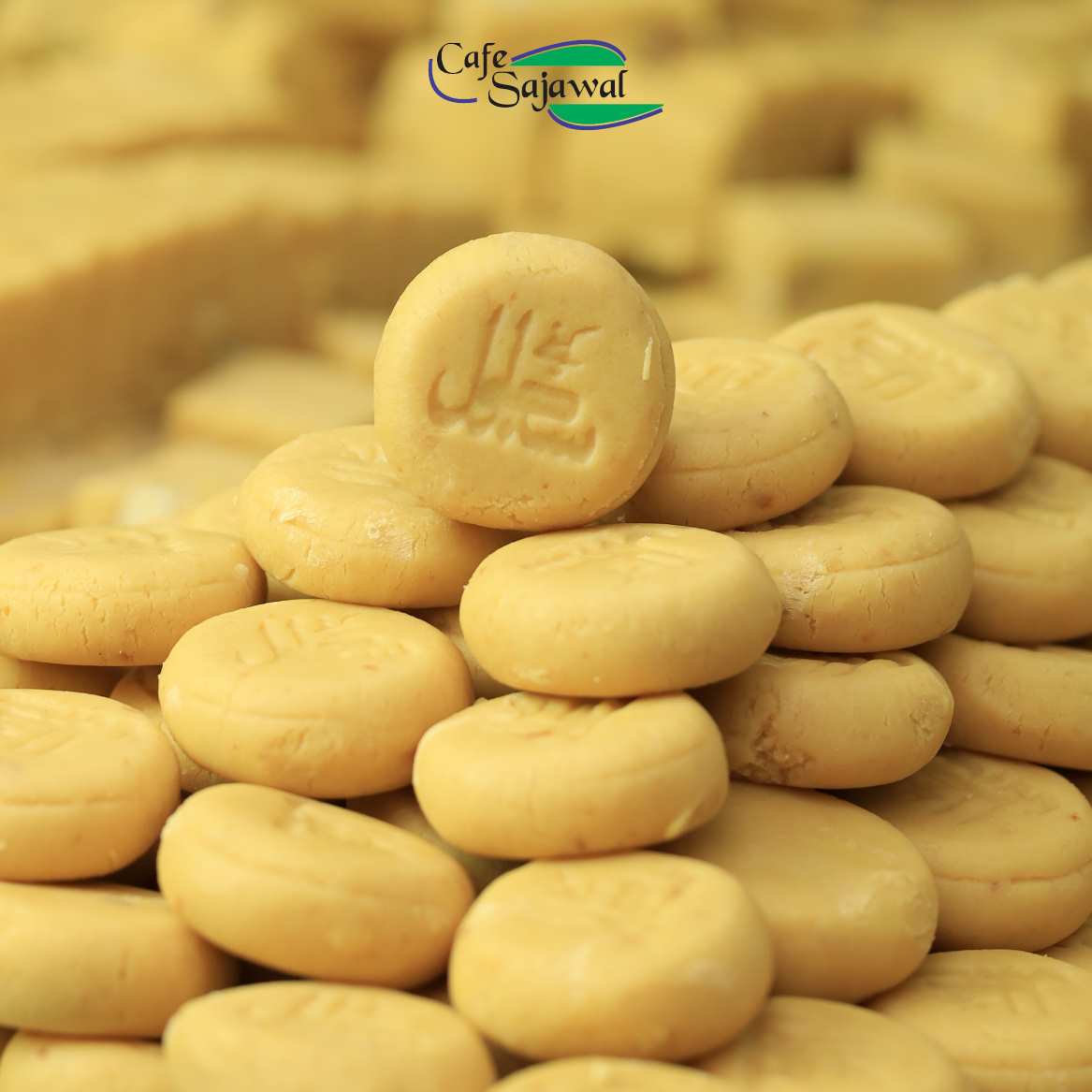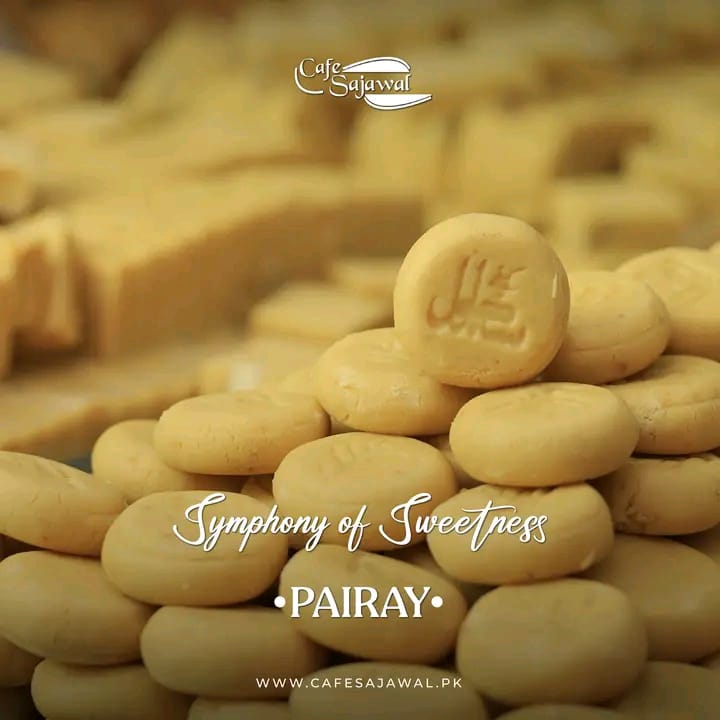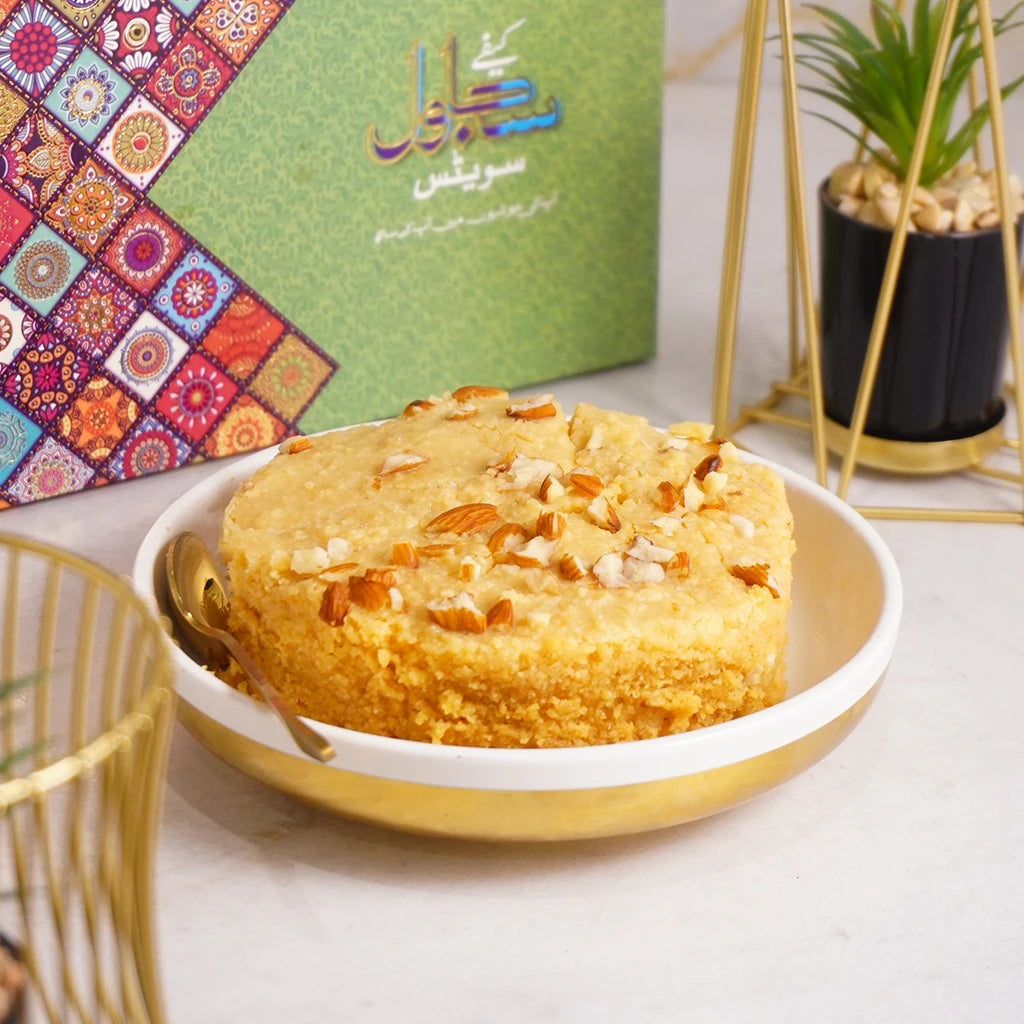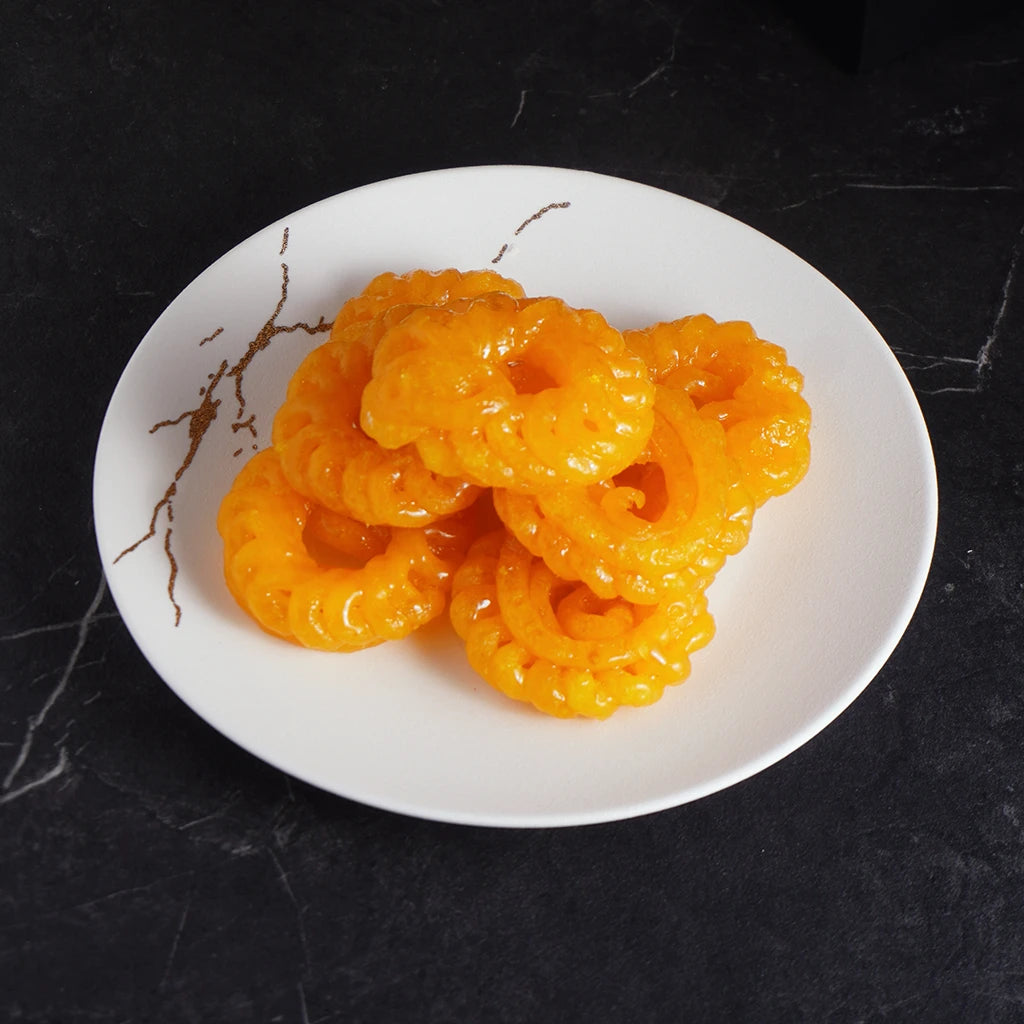
Amrati
Estimate delivery times: 1-2 days (All Pakistan).
Visa,Master,Jazz Cash, Bank Transfer
Guarantee Safe Checkout.

Amrati
Cafe Sajawal Amrati
A crispy, golden Pakistani sweet made with daal mash and sugar. Crunchy outside, soft inside—perfect for Eid, family gatherings, or nostalgic snacking!
Why Love It?
✔️ Crunchy-Soft Perfection: Irresistible texture with a cardamom kick.
✔️ Authentic Recipe: Crafted with daal mash for genuine desi flavor.
✔️ Festive Favorite: Ideal for Eid, weddings, or sharing with loved ones.
✔️ Nostalgic Bite: Tastes like childhood memories and home!
History and Origin:
it traces its roots back to the Indian state of Maharashtra, where it originated as a popular street food snack. Over time, it has become a beloved sweet dish enjoyed across India during festive occasions and celebrations.
Preparation:
To prepare Amrati, urad dal is soaked overnight and then ground into a smooth batter. The batter is then mixed with jaggery and cardamom powder to add sweetness and flavor. Small portions of the batter are deep-fried until golden brown and crispy, resulting in perfectly textured.
Cultural Significance:
it holds cultural significance in Indian cuisine and is often prepared during festivals like Diwali, Ganesh Chaturthi, and Holi. It is also served as prasad (offering) at temples and religious ceremonies, symbolizing prosperity and auspiciousness.
Nutritional Value:
Amrati is a nutritious sweet dish that provides energy and essential nutrients. Urad dal is rich in protein and fiber, while jaggery offers minerals like iron and calcium. However, it is important to consume Amrati in moderation due to its high calorie and sugar content.
Popular Recipes at Cafe Sajawal:
At Cafe Sajawal, we offer a variety of its recipes, including traditional and innovative flavors, to cater to different tastes and preferences. From classic jaggery-based Amrati to modern twists with chocolate or fruit fillings, there is something for everyone to enjoy.
Health Benefits:
Despite being a sweet indulgence,it offers several health benefits when consumed in moderation. Urad dal is known for its digestive properties and is beneficial for heart health, while jaggery provides natural sweetness without the harmful effects of refined sugar.
Serving Suggestions:
it can be enjoyed on its own as a sweet snack or paired with beverages like tea or coffee for a delightful treat. It is often served warm with a garnish of grated coconut or powdered sugar for added flavor and presentation.
Tips for Making Perfect Amrati
To achieve the perfect texture and flavor in Amrati, it is essential to soak the urad dal sufficiently to ensure easy grinding and fermentation. Additionally, maintaining the right oil temperature while frying is crucial for crispy and evenly cooked Amrati.
Common Mistakes to Avoid When Making it:
Some common mistakes to avoid when making it include using stale urad dal, not adding enough jaggery for sweetness, and frying the batter at the wrong temperature, resulting in soggy or greasy Amrati.
Conclusion
In conclusion, it is a delightful sweet dish that embodies the rich culinary heritage of India. Whether enjoyed during festive celebrations or as a comforting indulgence, Amrati continues to captivate taste buds with its irresistible taste and cultural significance.
FAQs
-
Can I make it without soaking the urad dal overnight?
- While soaking the urad dal overnight is ideal for fermentation, you can use urad dal flour as a quicker alternative.
-
Is it suitable for vegans?
- Yes, Amrati can be made vegan-friendly by substituting jaggery with other sweeteners like coconut sugar or maple syrup.
-
How long does it stay fresh?
- it can be stored in an airtight container at room temperature for up to 2-3 days. However, it is best enjoyed fresh for optimal taste and texture.
-
Can I freeze leftover for later consumption?
- Yes, you can freeze leftover \ in a freezer-safe container for up to 1 month. Thaw it at room temperature before reheating or serving.
-
What is the difference between Amrati and Medu Vada?
- While both Amrati and Medu Vada are made from urad dal batter, it is sweet and crispy, whereas Medu Vada is savory and typically served with sambar and chutney.
Service
Home Delivery All Over Pakistan
Delivery in 2 Working Days
24/7 Order Support Available
Order Now on WhatsApp:
Click Here
| Available Packing : |
0.5 KG, 1 KG |
|---|



